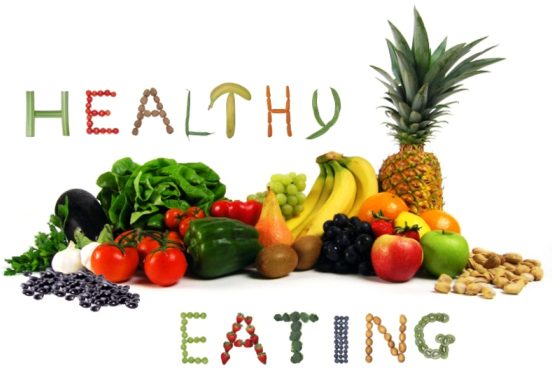From how to go vegetarian to IBS, Arlene has got the answers!
My family doesn’t eat very much meat, so we are interested in trying a vegetarian diet. How can I ensure that my two teenagers won’t miss out on all the nutrients they need?
Going vegetarian together will certainly make mealtimes easier, but remember: When you go meat free, it is easy to fill up on starchy carbs, such as bread, pasta, potatoes and rice, or to eat too many processed foods which are full of salt. And this may sound obvious, but you still need to ensure you are reaching your daily target of five serves of vegetables and two serves of fruit. Vegetarians are at risk of becoming deficient in certain key nutrients, namely iron, calcium and vitamin B12 and Omega-3 fatty acids. Meat is a major source of iron, so seek out vegetarian iron sources, such as eggs, dark green leafy vegetables, unsalted nuts and iron fortified cereals. Calcium is important for adolescents because it helps build healthy bones. Your teenagers’ diets should include a wide variety and range of reduced fat dairy products such as milk, cheese, yoghurt and ricotta. Vitamin B12 is present only in animal foods, so if eggs and dairy products stay on the family menu in adequate amounts you should meet your requirements; if not, you may need a supplement to boost your intake. Oil-rich fish is the best source of naturally occurring Omega-3 fats, but walnuts, chia seeds and flaxseeds all contain small amounts, as do fortified eggs and table spreads. Pay a little more attention to the way you eat, and going vego is easy!
As a working parent, i just don’t have time to make my own lunch in the mornings. What should I look for when I am trying to buy a healthy lunch?
Lunch is an important meal, as it is our opportunity to refuel for the rest of the day. To do so, we need the foods that can stabilise our blood sugar levels, maintain our concentration and prevent that dreaded 3-30tyitis! so what makes up a healthy lunch? First include plenty of colourful veges or salad to provide filling fibre and a wide range of nutrients, along with satisfying textures and flavours. Next add lean protein such as tuna, egg, chicken, tofu or legumes (such as beans, lentils or chickpeas). This way, you will feel full for longer and your blood sugar levels will be more stable. Complete your lunch with a low GI carbohydrate or grain-based food, like sweet potato, wholegrain bread brown rice or quinoa, for lasting energy throughout the afternoon. Here are my favourite lunches for busy people:
Sandwiches, wraps or rolls, super salads, sushi and rice paper rolls.
 I suffer from a lot of digestive problems such as bloating, pain and ‘toilet problems’. Politely called Irritable Bowel Syndrome. So for most people eating is a pleasant affair, but for me it is awful. Do you have any suggestions?
I suffer from a lot of digestive problems such as bloating, pain and ‘toilet problems’. Politely called Irritable Bowel Syndrome. So for most people eating is a pleasant affair, but for me it is awful. Do you have any suggestions?
The FODMAP diet ‘fermentable oligosaccharides disaccharides monosaccharides and polyols’ was developed by Dr. Sue Shepherd and researchers at Monash University. It limits sugars poorly absorbed in the small intestine such as lactose, fructans and fructose. This means limiting foods such as milk (lactose), honey (excess fructose), onion (fructans), stone fruit (polyols) and legumes (galacto-oligosaccharides) – though some people may tolerate certain food groups better than others. It is vital to consult a doctor to rule out other health complaints first.
Most people with irritable Bowel syndrome (IBS) find this diet life- changing. Many recipes can be adapted to suit low-FODMAP requirements. It is best to commence the diet under the guidance of a dietitian. The FODMAP diet definitely leads to a healthier digestive system.
I can’t eat dairy, but I would like to keep my calcium intake high. Can you recommend any snacks that are high in calcium and dairy free?
Happily lots of snacks suit your needs. For a portable snack pack a zip-lock bag with unsalted nuts or seeds. A 30g handful of almonds (about 20 nuts) contains the most calcium (75mg), followed by brazil nuts (45mg per 30g, or 10 nuts). Both pistachios and sunflower seeds contain 33mg per 30g. To boost the calcium content even more add two or three dried figs. Adults need 1000 mg per day, and older adults require up to 1300mg a day, so top up with highly satisfying snacks. In the morning, use calcium-fortified soy milk in coffee, or whiz up a fruit-based soy smoothie. In the afternoon, go for oily fish with edible bones, such as sardines or pink salmon. A small can of fish on a few wholegrain crackers provides up to 500mg of calcium. Forgoing dairy foods because of lactose intolerance? Bear in mind that many sufferers can tolerate a small tub of yoghurt (and its calcium) without suffering from any related symptoms.
What can I do to ease constipation in a child?
There are several reasons why your child may be suffering from constipation and it’s important to find the cause in order to treat it correctly.
The first step would be to have a diet assessment. This will help to determine whether the cause of constipation is associated with not consuming enough fluids or fibre rich foods such as wholegrains, fruits, vegetables, nuts & seeds.
If your child’s diet already contains adequate fibre & fluids, digestive disturbances such as lactose/ gluten intolerance or irritable bowel syndrome may be a factor. The best place to begin diagnosis & treatment is your GP where you can then be referred to a dietitian if necessary.
In the mean time ensure adequate water intake, increase consumption of fresh vegetables, fruit, legumes and nuts and switch to wholegrain/ wholemeal bread, pasta & rice options appropriate for their age. Along with regular exercise, this may regulate bowel movements. If you can, try whole fruit & vegetable smoothies as well. These are gentle on the digestive system and full of fibre.
